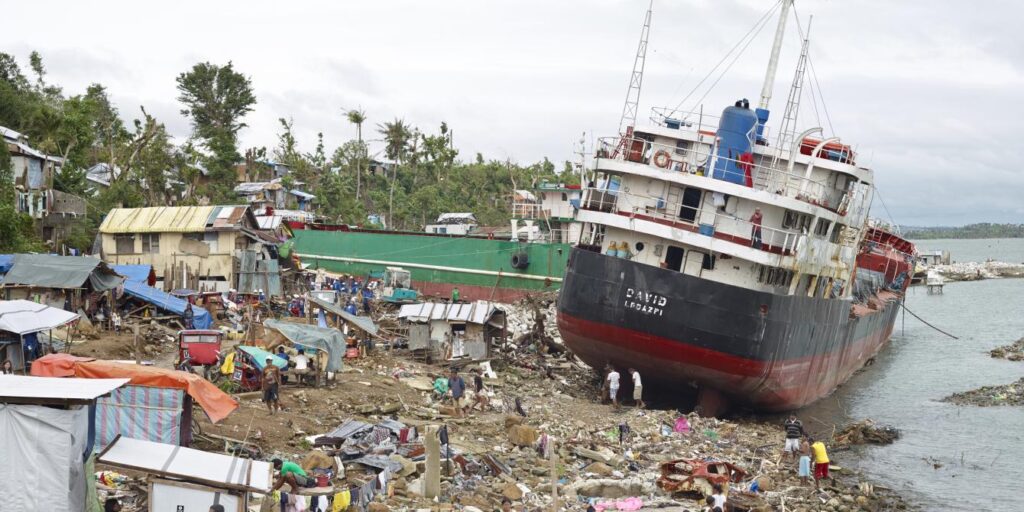Smog in Lahore is reaching alarming levels, turning the vibrant city into one of the world’s most polluted cities in the world. The thick haze that engulfs Lahore isn’t just an eyesore – it’s a severe threat to public health, the economy and the environment.
Lahore Air Quality Index
According to the Air Quality Index (AQI), Lahore frequently ranks among the top cities with hazardous air quality, often exceeding safe limits by large margins.
Lahore Smog: Causes and Factors
Over the past decade, Lahore has witnessed a dramatic escalation in air pollution. Once known for its rich history and culture, the city is now synonymous with smog, especially during the winter months. In 2023, Lahore’s Air Quality Index (AQI) made it the fifth-most polluted city globally. Furthermore, in November 2024, its AQI topped 1,160 – 120 times the levels recommended by the World Health Organisation.
Major Air Pollutants in Lahore: Causes
The primary pollutants contributing to Lahore’s smog include particulate matter (PM2.5 and PM10), nitrogen oxides (NOx), sulfur dioxide (SO2) and ozone (O3).
The city’s rapid industrialisation without stringent environmental regulations has led to unchecked emissions. Industries often lack proper filtration systems, releasing pollutants directly into the atmosphere.
The surge in personal vehicle ownership, coupled with outdated engines and low fuel quality, is the leading source of air pollution. The city has around 6.2 million vehicles and 4.2 million motorcycles – over 50% of the cars in the Punjab province. This accounts for 43% of Punjab’s air pollution.

Lastly, agriculture accounts for 20% of the city’s air pollution. Farmers burn crop residue to clear fields quickly, a practice that intensifies during October and November. This releases pollutants from neighbouring rural areas, affecting the city’s air quality.
Effects of Smog on the City
These air pollutants directly impact the city population’s health and well-being. Exposure to high levels of particulate matter and other pollutants can lead to respiratory infections, heart disease and lung cancer. Overall, this reduces the life expectancy of people living in Lahore by 7 years.
Smog also reduces sunlight penetration, affecting photosynthesis in plants and leading to reduced agricultural yields. Studies suggest the impact is up to a 30% reduction in yields. This compounds the country’s food insecurity issues and directly impacts the economy. Agriculture employs 38% of the country’s workforce and accounts for 19% of its GDP.
Similarly, the health impacts result in increased medical costs and lost productivity. Overall, air pollution costs Pakistan around 6% of its GDP annually.
Weather Conditions in Lahore Amplify Air Quality Concerns
Lahore’s climate and weather patterns further exacerbate the air pollution issues. A key factor is the frequent occurrence of temperature inversions during winter months. This occurs when a layer of warm air forms above cooler air near the ground, trapping pollutants near the surface. Furthermore, the city’s location between two mountain ranges – the Vindya to the south and the Himalayas to the north – limits dispersal above the city.

Most Polluted Cities in Pakistan
While Lahore has the worst air quality in Pakistan, air pollution is a pervasive issue across the country. Karachi, the nation’s largest city, frequently experiences elevated levels of air pollution due to industrial emissions, heavy traffic and construction dust. The city’s average AQI during 2023 was 56.4, just over half of Lahore’s 99.5. Faisalabad, another major industrial centre, faces similar challenges with a 2023 AQI of 88.2, just behind Lahore.

While Lahore ranks as the most polluted city in Pakistan, these statistics highlight that other cities are not far behind. The air quality in these cities consistently falls into the “unhealthy” category, affecting millions of residents. This nationwide trend underscores the urgent need for comprehensive air quality management and pollution control measures across all major urban centres in Pakistan, not just for Lahore.
Addressing Air Pollution in Lahore
A dual approach is necessary to combat the city and country’s air pollution issues effectively. This entails implementing mitigation strategies to reduce pollution levels and assisting the population in adapting to the existing environmental conditions.
Mitigation Strategies and Solutions
Firstly, the government must enforce stringent environmental regulations. Implementing Euro 6 emissions standards for vehicles could significantly reduce harmful emissions. Although Pakistan has announced plans to shift to higher-grade fuels, accelerating this transition is critical. Industries should be mandated to install air filtration systems and adhere to emission guidelines strictly.
Technological innovation also plays a pivotal role. Investing in renewable energy sources like solar and wind can decrease dependence on fossil fuels. Lahore receives ample sunlight year-round, making it ideal for solar energy projects. Expanding eco-friendly public transportation is another effective strategy to reduce the number of private vehicles on the roads, subsequently lowering vehicular emissions.
Community and corporate engagement are equally important. Businesses should adopt sustainable practices and contribute to environmental conservation through corporate social responsibility initiatives. Public awareness campaigns can educate citizens about the health risks of smog and promote behaviours that reduce pollution, such as carpooling, using energy-efficient appliances and proper waste disposal.
Adaptation Strategies for Affected Populations
While mitigation efforts are in progress, protecting the health of those currently impacted by smog is vital. Individuals can take protective measures like wearing N95 masks outdoors and using air purifiers at home and work. Schools might consider holding indoor activities or adjusting schedules during peak pollution periods to safeguard children’s health.
Health care providers play a crucial role in managing smog-related health issues. Enhancing hospital capacities to treat respiratory and cardiovascular conditions is necessary. Telemedicine services can offer remote consultations, minimising the need for patients to travel in polluted conditions.
Implementing early warning systems to forecast high pollution days can help residents take necessary precautions. Mobile applications and SMS alerts can provide real-time air quality updates. Community programs could distribute masks and offer education on reducing exposure, particularly targeting vulnerable populations in highly polluted areas.
Towards a Sustainable and Smog-free Lahore
Ultimately, the smog crisis in Lahore is a complex issue that poses severe risks to public health, the environment, and the economy. Urgent and collaborative action is required from policy-makers, corporations and communities to implement sustainable solutions. As we connect climate science to climate action, addressing these challenges head-on is imperative to ensure a sustainable future for all residents.
Eric Koons
Writer, United States
Eric is a passionate environmental advocate that believes renewable energy is a key piece in meeting the world’s growing energy demands. He received an environmental science degree from the University of California and has worked to promote environmentally and socially sustainable practices since. Eric has worked with leading environmental organisations, such as World Resources Institute and Hitachi ABB Power Grids.
Eric is a passionate environmental advocate that believes renewable energy is a key piece in meeting the world’s growing energy demands. He received an environmental science degree from the University of California and has worked to promote environmentally and socially sustainable practices since. Eric has worked with leading environmental organisations, such as World Resources Institute and Hitachi ABB Power Grids.
















